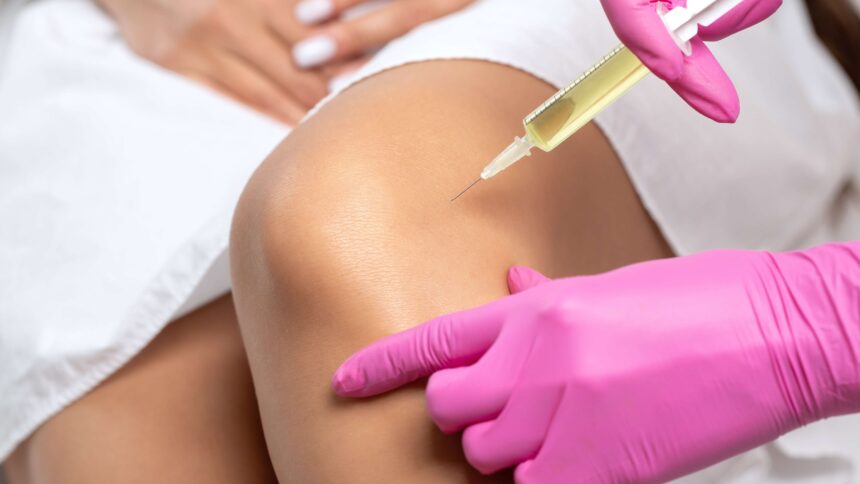Understanding PRP Therapy for Knee Injuries
How PRP Injections Work for Knee Injuries
PRP therapy involves drawing a small amount of blood from the patient, which is then processed in a centrifuge to separate and concentrate the platelets. These platelets contain growth factors that aid in tissue repair and regeneration. When injected into an injured knee, PRP stimulates natural healing mechanisms, reducing inflammation and promoting faster recovery.
Common Sports-Related Knee Injuries Treated with PRP
Athletes frequently experience knee injuries due to excessive strain, repetitive motion, or impact during sports activities. PRP therapy has been successfully used to treat injuries such as ligament sprains, meniscus tears, tendon inflammation, and cartilage damage. Many individuals suffering from chronic knee pain due to sports-related stress also benefit from this advanced treatment.
Why Athletes in Abu Dhabi Choose PRP Therapy
Athletes and active individuals in Abu Dhabi prefer PRP injections for knee injuries because of their non-surgical nature and ability to enhance recovery. Traditional treatments may require prolonged rest or surgery, while PRP injections support faster healing without invasive procedures. Additionally, PRP therapy aligns with the growing preference for regenerative medicine, which focuses on harnessing the body’s own capabilities to heal itself.
The PRP Injection Procedure for Knee Injuries
The PRP procedure begins with a simple blood draw, followed by the extraction and concentration of platelets. The resulting PRP solution is then injected directly into the injured knee using ultrasound guidance to ensure precision. The entire process takes about an hour, and most individuals can resume light activities shortly afterward. While multiple sessions may be required for optimal results, many athletes report noticeable improvement after the first treatment.
Recovery and Rehabilitation After PRP Therapy
Following a PRP injection, individuals are encouraged to follow a tailored rehabilitation program to maximize healing. Resting the knee for a short period, followed by gradual reintroduction to physical activities, ensures a balanced recovery. Physical therapy may also be recommended to strengthen the knee and prevent future injuries.
Effectiveness of PRP Injections for Knee Healing
PRP therapy has shown promising results in reducing pain and improving mobility for individuals suffering from sports-related knee injuries. Many studies indicate that PRP injections can enhance tissue repair, accelerate healing, and reduce inflammation more effectively than conventional treatments. Athletes often experience improved knee function, allowing them to return to their sports with confidence.
PRP vs. Traditional Treatments for Knee Injuries
Traditional treatments for knee injuries often involve physical therapy, pain medications, or surgery in severe cases. While these methods can be effective, they may require long recovery periods. PRP injections offer a natural alternative that promotes healing without the risks associated with surgery or prolonged medication use.
Safety and Suitability of PRP for Sports Injuries
PRP therapy is considered a safe treatment as it uses the patient’s own blood, minimizing the risk of allergic reactions. It is well-tolerated by most individuals and has been successfully used by athletes worldwide. However, a thorough evaluation by a specialist is necessary to determine if PRP is the right treatment based on the severity and type of knee injury.
When to Consider PRP Therapy for Knee Injuries
Athletes experiencing persistent knee pain, limited mobility, or slow recovery from a sports injury may consider PRP therapy. It is particularly beneficial for those who wish to avoid surgery or those who have not responded well to traditional treatments. Consulting with a medical professional can help determine if PRP is suitable for an individual’s specific condition.
PRP for Knee Injuries: Long-Term Benefits
PRP therapy not only aids in short-term recovery but also contributes to long-term joint health. By stimulating tissue regeneration, PRP injections can strengthen knee structures, reduce the risk of future injuries, and support overall joint function. Athletes who undergo PRP therapy often report sustained improvements in mobility and pain relief.
Success Stories of Athletes Using PRP Therapy
Many professional and amateur athletes have turned to PRP injections to recover from knee injuries and return to their sports. The ability of PRP to accelerate healing has made it a preferred choice among those seeking a non-surgical solution to knee pain. Numerous success stories highlight the effectiveness of this therapy in restoring mobility and enhancing performance.
PRP Therapy for Active Individuals Beyond Sports
While PRP therapy is widely used by athletes, it is also beneficial for individuals with active lifestyles who experience knee pain due to exercise, running, or other physical activities. PRP injections offer a solution for anyone seeking to maintain an active routine without being hindered by knee discomfort.
The Future of PRP Therapy in Sports Medicine
As research continues, PRP therapy is expected to play an even greater role in sports medicine. Advancements in regenerative medicine are expanding the applications of PRP, making it a promising option for treating various musculoskeletal conditions. With growing awareness and success stories, more athletes are considering PRP injections for enhanced knee recovery.
Frequently Asked Questions (FAQs)
How long does it take to see results from PRP injections for knee injuries?
Many individuals notice improvements within a few weeks, with continued progress over several months as the healing process advances.
Is PRP therapy painful for knee injuries?
The injection may cause mild discomfort, but it is generally well-tolerated. A local anesthetic can be used to minimize any pain during the procedure.
Can PRP injections prevent knee injuries in athletes?
While PRP is primarily used for healing injuries, it can also help strengthen knee tissues, potentially reducing the risk of future injuries.
How many PRP sessions are needed for knee recovery?
The number of sessions varies based on the severity of the injury. Some individuals require a single injection, while others may benefit from multiple treatments.
Can PRP therapy replace surgery for knee injuries?
PRP therapy is an excellent alternative to surgery for many cases, but it may not be suitable for all conditions. A consultation with a medical professional is essential to determine the best course of treatment.


